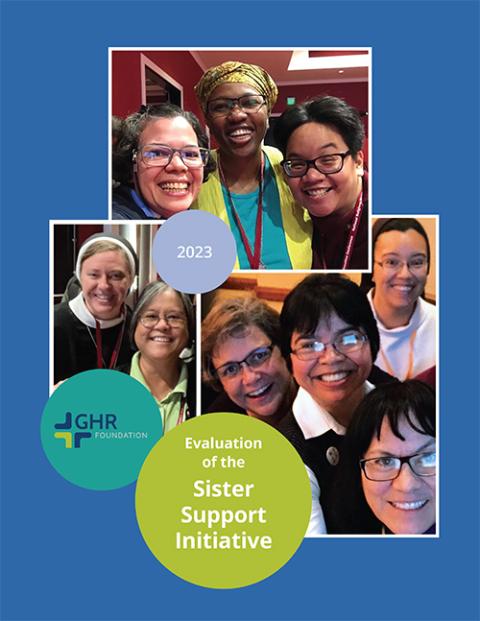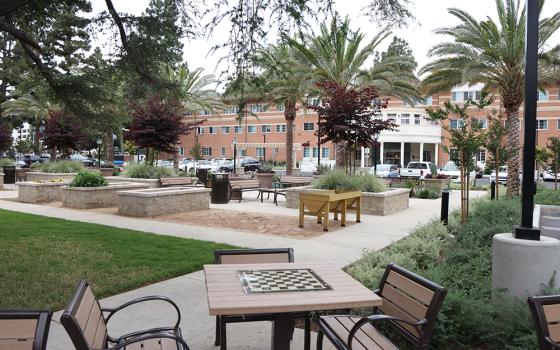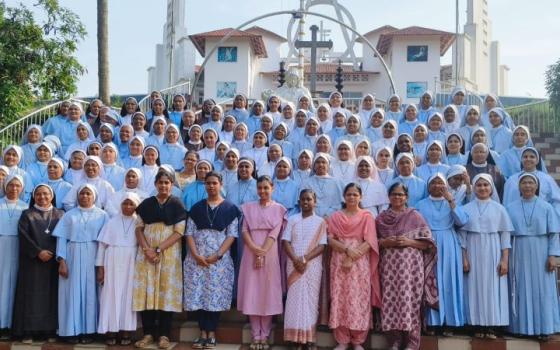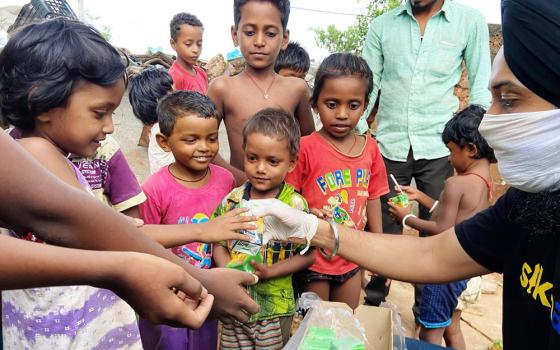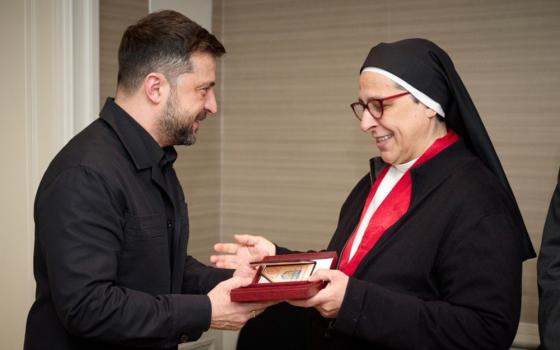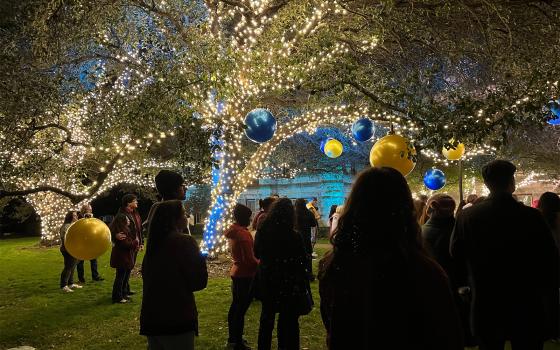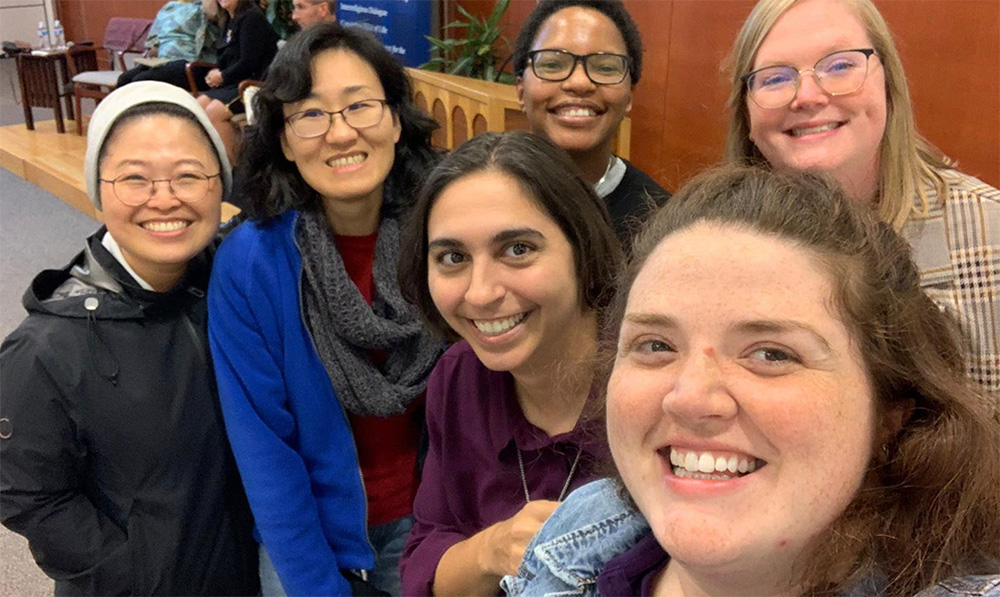
The Religious Formation Conference offers an intercongregational novitiate, one of the programs the GHR Foundation has funded through its Sister Support Initiative. The 10 years of GHR’s efforts to support Catholic sisters in their transformation was the focus of a recently released evaluation study. (Courtesy of GHR Foundation)
Religious life in the U.S. continues to transform with emerging forms, partnerships and relationships, according to an evaluation of the GHR Foundation's Sister Support Initiative. "The dominant narrative of decline is being gradually replaced by a new narrative of collaboration, reconfiguration, and a sense that the quality of presence that sisters bring is more important than their numbers," the report said.
That is one of the central themes of the report, released Sept. 15, which served as an assessment of the GHR Foundation's investment in the Sister Support Initiative and a look at the state, and transformation, of religious life in the U.S.
Since 2010, GHR has focused on supporting Catholic sisters in this transition, specifically on four areas: leadership, membership, resource development and new forms. The new forms include collaboratives, budding movements and organizations such as "Nuns and Nones," described in the report as "a growing intergenerational, spiritually diverse multiracial drawing on the wisdom and traditions of women religious."
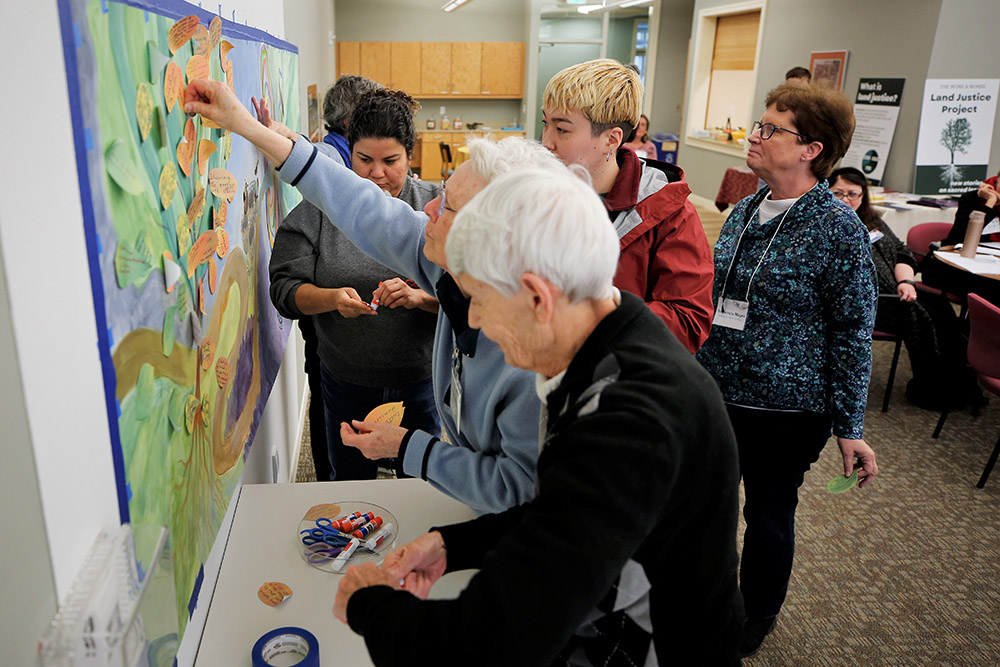
Nuns and Nones is an intergenerational spiritual community nourished by the wisdom and traditions of women's religious life. (Courtesy of GHR Foundation)
"We're beginning to see the building blocks of a different narrative: the charism of religious life, resilience, collaboration, increased focus on 'the life' itself, increasing diversity," senior program officer Kathleen Mahoney said in an email interview. "I was taken by the words of a younger sister who said that she entered only knowing smaller communities — that smaller was okay and expected. That's the current lived experience for younger sisters."
GHR is now winding down this initiative, which provided a timely moment to look back and assess, through the grants it has made and programs it has helped foster, how religious life has evolved over the past decade and what may lie ahead for sisters in this country, said Mahoney, who is retiring in October.
Program officers Yende Anderson and Tarra McNally will be overseeing the remaining grants.
Since 2010, GHR has made a total investment of at least $15.58 million in grants to bolster religious life in the U.S. In making the grants, GHR sought out entrepreneurial women religious who are visionary leaders and "connectors," recognizing that women religious with these traits "play a central role in bringing about change," the report said.
The study offers several examples of GHR's efforts to find and foster ways to strengthen leadership and transformational change. For instance, GHR tapped entrepreneurial members of the Mercy Sisters to share their leadership program with other congregations. The Leadership Collaborative, started in 2012, has trained more than 528 sisters from various congregations as well as more than 200 associates.
Entrepreneurial members of Region 9 of the Leadership Conference of Women Religious in 2018 created the Wisconsin Religious Collaborative to share resources and professional expertise in finance, management, governance and other areas. They have also helped launch other new cross-organizational efforts. (LCWR has about 1,350 members, who represent about 67% of the approximately 35,000 women religious in the U.S.)
In addition to assessing GHR's grants and programs to support women religious and their congregations, the study is a concise and insightful summary of trends and events that have affected Catholic sisters in the U.S. in the past decade. It cites the two Vatican investigations, the apostolic visitation of U.S. women religious institutes between 2009 and 2012, and the scrutiny of LCWR by the Congregation for the Doctrine of the Faith in 2009 to 2015.
Advertisement
"This was a stressful endeavor for the sisters that took time and energy away from the urgent need to address all the issues facing them," the report said. "While it can never be known how the Vatican's involvement affected sisters' efforts to forge a new future, GHR staff did hear comments that the Vatican interventions required time, energy and resources that could have been spent working toward a new future for religious life."
The COVID-19 pandemic also forced the sisters "once again into crisis management mode." Elderly members of communities were more vulnerable to the virus, and in-person gatherings "critical to navigating transition" had to be put on hold. A small silver lining appeared as communities found technology platforms to help them collaborate and share resources digitally.
While the pandemic slowed progress on several GHR-funded projects, the report noted, it also pointed out that two-thirds of the new forms emerged in the final three years of the Sister Support Initiative.
"This speaks to the arc of change, with older understandings and ways of doing things diminishing, while new forms rose to address shared challenges and negotiate the curve to the sisters' shared future," the report said. "The fertile soil from which new forms sprung forth, in our opinion, speaks to the success of the emergent-strategy approach that GHR staff embraced and the courage of women religious to face the grief of transition as well as the joy of fresh opportunities."
Indeed, the report also noted that "a steady stream" of new entrants into women's religious life, with a total of 1,085 women in initial formation as of 2019, a decline of only 10% from 2009. Almost half of those in initial formation are younger than 30, an increase from the 43% who were under age 30 in 2009.
The Sister Support Initiative "has created opportunities for creativity, resilience, reinvigoration, and a sense of confidence as women religious strike out on their journey of transformation, forging a new future for women's religious life in this country," the evaluation said.
GHR gathered participants who had partnered with the Sister Support Initiative in various projects to a Zoom meeting Sept. 15 to review the evaluation and hear presentations from some organizations that had been grant recipients.
In interviews with some of the participants afterward, they expressed their appreciation for GHR's vision and the funding of initiatives to enhance and strengthen religious life.
Sr. Carol Zinn, executive director of LCWR and a Sister of St. Joseph of Philadelphia, expressed gratitude for GHR's insight and funding of initiatives that "focused on the vocation itself and not the ministry," she said.
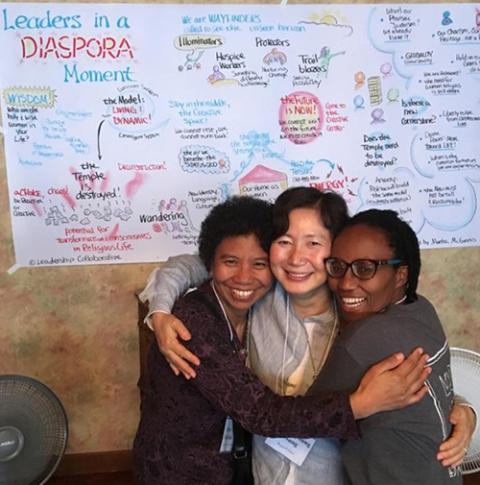
The Leadership Collaborative provides leadership development training for younger sisters; hundreds of graduates have formed a robust peer network. (Courtesy of GHR Foundation)
She cited a segment of the report that noted that sisters are "pushing back" against a common characterization of women religious as "worker bees" for the church. GHR should be credited in "lifting up the focus of consecrated life itself regardless of the service to the world."
She also found refreshing "the hope and the impetus of moving forward," and that the "diminishment narrative has absolutely turned a corner, so after we've turned the corner, now how do we keep going there together."
A common theme that emerged in the discussion was that structures need to shift and transform for what is needed in religious life, said Sr. Linda Buck, co-executive director of the Leadership Collaborative and a Sister of St. Joseph of Orange (California).
"This is not only governance structures but also mindsets for religious life," she said. "What houses our attitudes and how we view things."
The identification of the importance of "connectors" and relationships in the report is one aspect that "gives me hope," said Sr. Teresa Maya, former LCWR president and a member of the Sisters of Charity of the Incarnate Word. Younger women religious "are finding meaning in building those connections," she said.
A lot of the initiatives funded by GHR, such as the Leadership Collaborative, will continue to bear fruit in the future, she noted.
"The capacity of GHR to look at what's changing, what needs to keep changing, and holds that up as a way for all of us to go forward is helpful," added Sr. Annmarie Sanders, a member of the Sisters, Servants of the Immaculate Heart of Mary.

